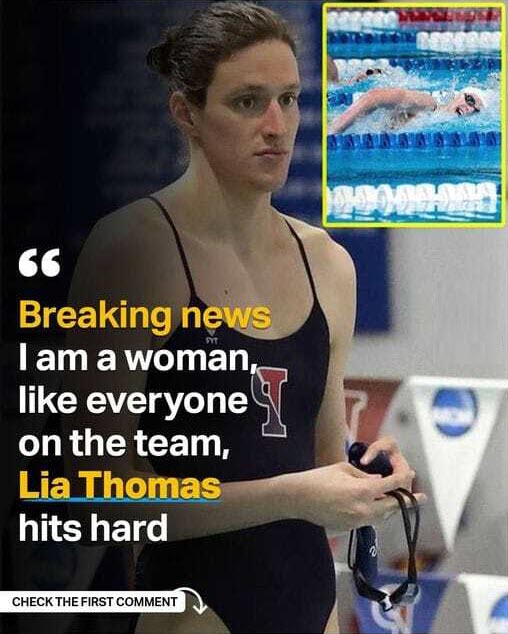Let’s talk about the elephant in the locker room: the participation of transgender athletes in collegiate sports. This hot-button issue is juggling several balls in the air, from fairness in competition to all-out inclusivity. Right at the eye of this hurricane is Lia Thomas, a name that’s become synonymous with the debate.

Like a real champion, Lia Thomas has been navigating these choppy waters. Lia affirmed her gender identity as a woman in an impassioned interview with Sports Illustrated, identifying with her cisgender classmates. It’s a strong declaration that gets right to the heart of the issue, which is accepting and recognizing transgender identities in the cutthroat realm of competitive athletics.
Being inclusive is a mission, not merely a trendy term. Proponents contend that it is critical to create a friendly environment for athletes such as Lia Thomas, regardless of biological differences. The core of inclusion is found beyond physical capability; it supports each athlete’s dignity and acceptance, regardless of gender identification.
Now, let’s tackle the big issue in track and field: biological variations. Indeed, transgender and cisgender athletes differ from one another physically. But to deny transgender athletes their proper position is to compromise acceptance and decency at its core. It’s certainly not easy to strike a balance between diversity and fairness in the sports world, but the journey is worthwhile.
The Difficulties Transgender People Face
For transgender people, life isn’t exactly a field of daisies, and Lia Thomas is no exception. There are several obstacles, ranging from systemic problems to societal mockeries. However, these challenges highlight the necessity of creating environments free from hostility so that transgender athletes can thrive. Proponents say that these kinds of surroundings are essential to their general well-being.
Lia Thomas’s courageous actions
It takes courage to speak up and make your identify known, particularly in front of such a large audience. The bold announcement of Lia Thomas’s femininity highlights the wider range of struggles that transgender athletes encounter. Her experience serves as a tribute to the bravery required to navigate a society that is gradually but inevitably becoming more inclusive.
The Movement for Transgender Rights’ Development
The campaign for transgender rights is growing, not simply marching. What began as a struggle for fundamental equality and acceptance has developed into a complex conversation concerning privilege and justice in competitive sports. Yes, things are changing, but in the thick of the discussion about competitive fairness, let’s not forget about the important problems of equality and acceptance.
Keeping Fairness and Inclusivity in Check
Here we are, therefore, at the crossroads of justice and inclusivity—a precarious equilibrium that calls for grace. Transgender people must be able to compete without having to worry about being harassed or discriminated against. It is equally important to recognize and honor biological diversity at the same time. It is undoubtedly difficult to navigate this complex terrain, but doing so is essential to advancing this vital discussion.





